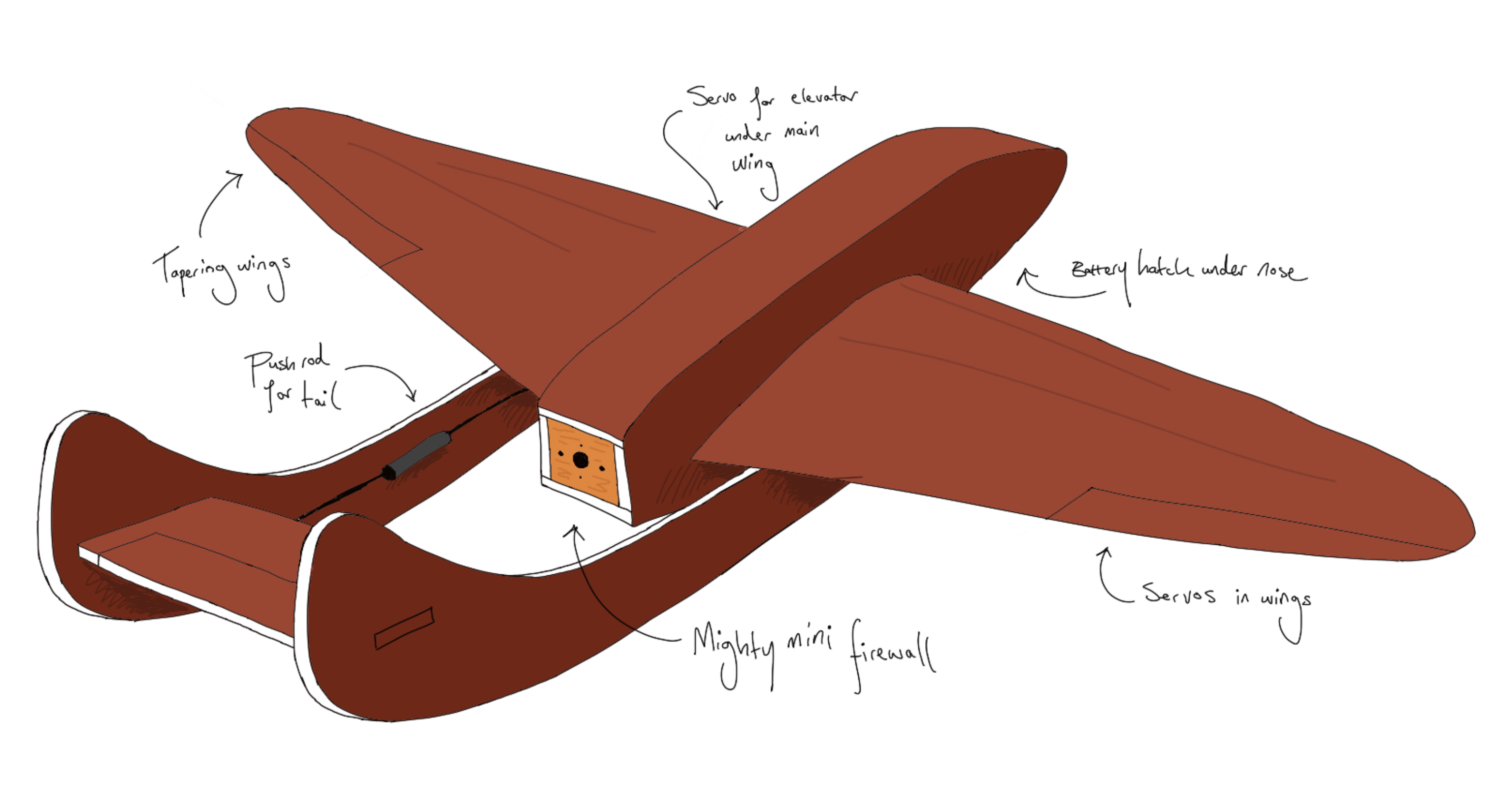For as long as I can remember, I've loved creating things. Be it making box forts with my sister aged 5, building huge cardboard ocean liners aged 10 or getting into RC aged 15 - whatever it was, I loved putting it together. Along with making physical objects, though, I developed my draws skills through sketching whatever came into my head. Turns out, it's actually quite easy to do when it comes to airplanes.

Learning the 3 View
The three view is a type of technical drawing used to show each an object from each side. It's especially helpful for airplanes. Wingspan, length of fuselage and size of tail feathers can be shown in relation to each other. As you're drawing in two dimensions, it's not that difficult to focus on one side at a time.

Sometimes you don't have to draw all three, a top and side view can suffice to get an idea down. It's pretty easy to draw a few lines starting with the fuselage and then moving to the top view. Drawing these 2D views is a great way to get your idea on paper quickly.

Sometimes you might want to draw multiple mini images of only the fuselage sides, or maybe the wings, simply to evolve your idea into a shape you like.

3D Sketches
Another great way to get your idea down on paper is to draw a simple minimalist 3D sketch of the entire airframe. This might be a little harder for those with less drawing experience, but you can still pick it up with some practice.

As you only have to draw one image, it's sometimes a lot quicker to draw like this. Choose a perspective you think will best show off the features of the aircraft and start making some light marks on the paper to represent the major shapes of the wings and fuselage. Once you're happy, start defining those lines and adding details.

Sometimes it's fun just to play around and draw several designs in one go to see which one you like the most.

Feel free to add as many notes and comments as you like, it helps you to think more about your idea in practical ways.

Sketchbooks

You should keep a sketchbook. The reason why? It's great to keep all of your ideas in one place. It doesn't have to be for just for planes, but you can keep a collection of your ideas contained ready to be revisited if you leave them for the time being.

This collection of sketches (above) in this particular sketchbook went on to become a mini design released into the FT community a few months ago, the Mighty Mini Vampire.

It's great seeing your concepts progress from a spark of inspiration to a few sketches all the way to a flying aircraft sharing sky with the birds.

If you found this article helpful, do give it a thumbs up! Look out for the next in this series of articles on making plans coming soon!
Article by James Whomsley
Editor of FliteTest.com










Log In to reply
Log In to reply
Log In to reply
https://forum.flitetest.com/index.php?threads/share-your-aviation-doodles.30639/
Feel free to head over that way and add your own, or just look through for inspiration.
Log In to reply
Extremely Rough and Ready Guide to Stable Airframe Dimensions
> Wingspan should usually be greater than fuselage length
> Increase wing area if you increase weight to keep wing loading the same
> Dihedral/polyhedral is useful for keeping you flying level
> Thinner wings create less drag (think about what a traditional glider looks like)
> Longer tails have better longitudinal and directional stability
> Longer wings have better lateral stability
> Smaller stubbier planes are generally less stable than longer thinner planes.
Log In to reply